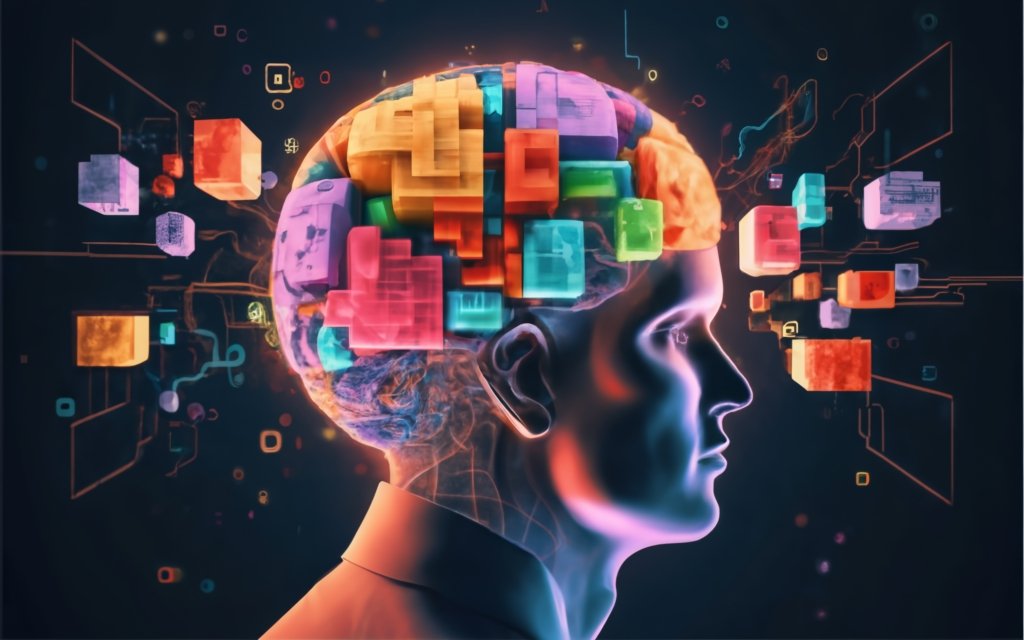Have you ever caught yourself thinking about Tetris puzzle pieces falling into place in everyday life after binge gaming? You’re not alone. This phenomenon, aptly named “the Tetris effect,” has intrigued scientists for decades.
As it turns out, playing the iconic block-stacking game can uniquely impact our brains. But how exactly does dropping Tetriminos translate to long-term changes in memory, learning, and even our dreams? Read on to uncover the psychology behind the Tetris effect and its surprising cognitive benefits.
A Phenomenon Named After the Game That Hypnotized the World
The “Tetris effect” refers to visualizing Tetris pieces and arrangements in your mind’s eye even when you’re not playing the actual game. The name comes from the world-famous tile-matching puzzle video game developed by Alexey Pajitnov in 1984.
So what causes this phenomenon? Essentially, it stems from playing Tetris extensively, to the point where your brain becomes so used to manipulating the differently shaped, falling blocks that you start seeing them everywhere.
Some real-life examples of the Tetris effect include:
- Visualizing grocery items on supermarket shelves fitting perfectly like Tetris pieces
- Mentally organizing objects in your room to stack like Tetris blocks
- Seeing the squares and lines of window panes as places to fit Tetriminos
The effect can be so strong that some Tetris gamers even report dreaming about the puzzling game pieces at night!
Behind the Screens: The Science That Makes Tetris Special
Experts believe there’s something unique about the cognitive processes involved in playing Tetris.
One key study published in BMC Research Notes showed practicing Tetris led to the following changes in adolescent girls’ brains:
- Thicker Cortexes: Certain brain areas showed increased cortical thickness, indicating growth of gray matter. This suggests playing Tetris may increase brain mass.
- Enhanced Efficiency: Other parts became more efficient, despite no change in cortical thickness. This indicates improved productivity of neuronal processes.
Table summarizing the study’s findings on changes in girls’ brains after practicing Tetris
So in essence, Tetris helps grow your brain’s gray matter while making it work in a more streamlined way. Researchers speculate this boosts your visuospatial skills – abilities like mental rotation and spatial visualization.
As such, the improved processing power and mental acuity from the neuroplastic changes likely facilitate the Tetris effect. Your honed visual-spatial circuitry essentially gets so used to handling Tetris pieces that you subconsciously start mapping real-world objects to them!
Following the Blocks: How Tetris Shapes Our Memories
Another contributor to the Tetris effect lies in the heart of the game’s endless, repetitive format. As you continue rotating blocks to form solid horizontal lines, your brain’s memory centers record the visual patterns.
Over time, the constant exposure trains your perceptual memory:
- You become extremely familiar with the seven distinctly shaped Z, S, O, L, J, T and I blocks
- You intuitively recognize valid vs invalid placements to complete rows
- You develop reflexes to rapidly spot openings to drop pieces into
In fact, a 2000 study published in Scientific American showed that novices who performed poorly at placing blocks experienced more Tetris-shaped dream imagery. This suggests repetitive learning of visuospatial layouts enhances your memory for the puzzles.
So in essence, regularly recalling game elements from memory consolidates the neural connections, making Tetris-style thinking more instinctual. This manifests as effortlessly visualizing block arrangements in any setting!
Leveling Up Our Learning Capabilities
Beyond memory, the Tetris effect likely also stems from the learning processes involved in playing the game. Mastering Tetris requires dynamically spotting patterns while strategizing how to optimally rotate and align pieces.
Such intense visuospatial decision-making trains flexible thinking and problem-solving skills. With practice, your brain gets so used to this that it starts automatically viewing real-life scenarios through a “Tetris lens,” mapping objects to puzzle pieces.
Additionally, the motivation to progress in Tetris continually challenges you. This drives persistent skill-building to get to the next level, further rewiring your brain to analyze environments as potential block layouts.
Some experts even believe that the neuroplasticity changes underlying the Tetris effect can enhance broader learning capacities:
- Increased gray matter can facilitate absorbing new concepts and skills
- More efficient neuronal communication aids integrating cross-disciplinary knowledge
- Heightened visuospatial cognition makes visualizing abstract ideas easier
So in a way, the Tetris effect demonstrates how simply playing an engaging, cognitively-stimulating game could potentially boost brainpower!
When Tetriminos Invade Our Sleep
Intriguingly, the Tetris effect extends beyond wakefulness – some avid gamers visualize Tetris blocks and layouts in their dreams too!
These “Tetris dreams” illustrate how the repetitive learning of visuospatial puzzles gets ingrained at a deeper subconscious level. While awake Tetris thinking manifests from practice-based plasticity changes, dreams indicate the effect permeates into sleep-based memory consolidation too.
Moreover, three amnesiacs with hippocampal lesions also reported seeing Tetris visuals in dreams after playing the game. This was despite not recalling the waking experience of playing due to their condition!
Such findings suggest that beyond memory storage, Tetris-style thinking may get integrated into innate visual-spatial processing in the brain. This could explain why the Tetris effect is often long-lasting rather than temporary.
So in a nutshell, Tetris dreams and amnesiac cases show how profoundly the game’s spatial patterns imprint themselves, engaging innate neural networks that process shape and movement.
From Puzzles to Potential: Leveraging the Tetris Effect
While the Tetris effect originates from somewhat excessive gameplay, understanding this phenomenon has exciting real-world implications:
- Enhancing learning: Fluid intelligence gains from visuospatial training could help develop cognitive skills in learners. Schools could integrate puzzle games into teaching methods to potentially boost academic performance!
- Aiding rehabilitation: The cortical plasticity induced by Tetris could help rebuild neural pathways damaged by injury or neurodegenerative disease. Doctors are already using VR for stroke recovery – visually-stimulating games could be next!
- Boosting productivity: Tetris-style thinking promotes effective organization and spatial management skills. These are extremely valuable in fields like architecture, graphic design, and even retail space planning!
So while originally an intriguing quirk of the brain, the Tetris effect now shows promise for elevating cognition across diverse contexts.
Harnessing Tetris Thinking in Education
The beneficial spatial cognition and problem-solving training from Tetris could powerfully enhance learning in academic settings too.
In fact, a study published in the journal Computers & Education showed that playing Tetris improved 12-15-year-old students’ spatial visualization abilities. After daily Tetris training, participants demonstrated higher mental rotation skill than peers only attending regular classes.
Such concrete cognitive gains back the viability of game-based learning curriculums in schools. Educators could leverage Tetris’ engaging format to:
- Teach geometry concepts like spatial relations, angles, area measurement etc. in interactive ways
- Hone students’ abilities to visualize and manipulate 3D objects
- Encourage systemized thinking through organizing falling puzzle pieces
Importantly, the Tetris effect also indicates such benefits may persist long after gameplay ends. So by inspiring continued Tetris-style cognition, the learning boosts could be integrated as permanent mental skills!
When Tetris Becomes Too Much
However, the Tetris effect does have a dark side for some obsessive gamers.
In rare cases, extensive Tetris play triggers full-blown Game Transfer Phenomena (GTP) – severely impairing intrusive visions of falling Tetriminos in daily life. Sufferers can have difficulty performing tasks, concentrating at work, or even walking without seeing persistent block images.
Such symptoms suggest in some susceptible individuals, the Tetris effect taps into addictive pathways. The relentless puzzle format promotes excessive dopamine-driven gameplay, overstrengthening neural circuits.
GTP cases demonstrate the need to maintain a healthy balance between the cognitive benefits and obsession-risk from hyper-stimulating games like Tetris. Seeking help for disruptive tetramino visions may become vital for functionality in daily living too.
So while the Tetris effect is mostly harmless, recognizing the early signs of problematic fixation remains vital.
Balancing the Benefits and Risks
Clearly, Tetris gameplay poses a spectrum of outcomes – from enriching visuospatial cognition to seriously disrupting functioning in rare cases. Where does one draw the line between harnessing its perks versus falling prey to its clinginess?
Experts emphasize moderation and self-awareness as key principles. Setting reasonable daily time limits for Tetris can prevent excessive dopamine-seeking behavior. Additionally, noticing early signs of withdrawal, irritation or impairment indicates a need to cut back or take a break.
Seeking professional help is also vital if Tetris thoughts start severely affecting work performance, relationships or mental health despite reducing gameplay. Overall, being cognizant of your personal limits allows leveraging the game’s pros while avoiding its perils.
The Future of Tetris
While the Tetris effect has intrigued experts since the 90s, the phenomenon still holds untapped potential. Emerging studies demonstrate using Tetris to reduce traumatic memories, treat amblyopia and more – but what other frontiers await unlocking?
Some promising directions include:
- Investigating if the Tetris effect transfers benefits to other cognitive domains like verbal or navigation skills
- Developing Tetris-based interventions for disorders with visuospatial processing deficits
- Exploring VR/AR Tetris for enhanced spatial skill training
- Incorporating Tetris into standardized cognitive assessments
So over 35 years since its advent, the world’s beloved block-stacking game continues advancing the scientific frontier – perhaps the Tetris effect itself has now hypnotized researchers! The depths of this puzzle-powered phenomenon undoubtedly warrant deeper investigation.
The Final Piece in the Puzzle
Over three decades since the game’s creation, Tetris continues captivating the world with its simple, endless block-stacking fun. But as the famous Tetris effect demonstrates, its legacy extends far beyond just entertainment.
Rather, Tetris shows how a deceptively basic puzzle game can enhance mental skills. It compels us to reflect on how dynamic interactions with technology, even leisurely videogame play, can profoundly reshape our neural wiring over time.
So while we may never fully understand our brains’ tetromino obsession, the Tetris effect remains a fascinating window into its impressionable nature! The game’s lasting influences on memory, learning and beyond will undoubtedly continue fueling scientific curiosity for years to come.


